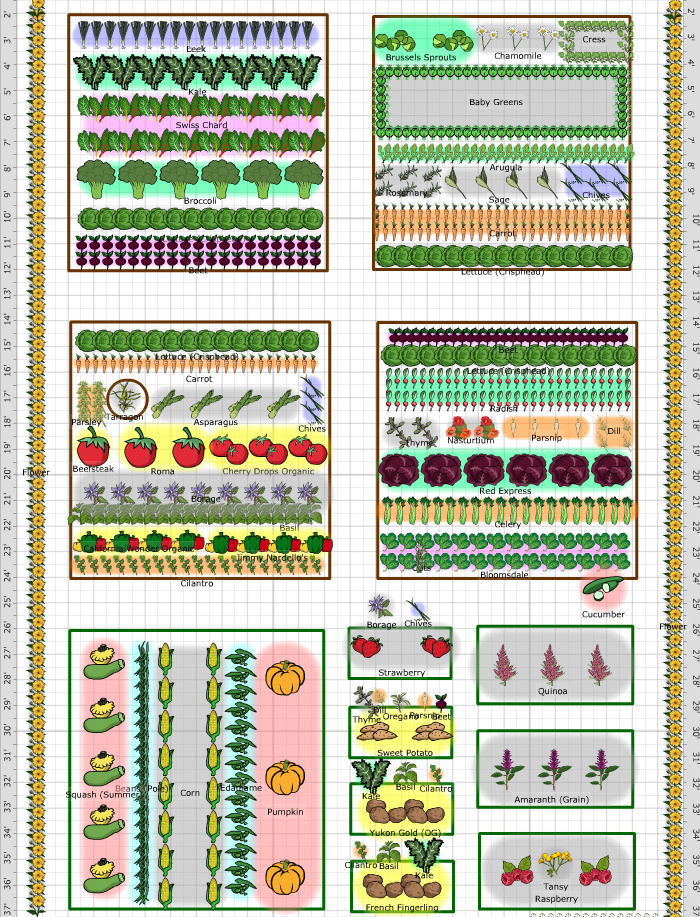Mastering Companion Planting in Raised Beds

Mastering Companion Planting in Raised Beds
Gardening in small spaces can be a challenge, but with the right techniques, you can turn your raised beds into a thriving ecosystem. One of the best ways to do this is through companion planting. This companion planting guide for raised beds will help you maximize your space, improve your soil, and keep pests at bay.
What is Companion Planting?
Companion planting is like setting up a buddy system in your garden. It's about pairing plants that grow well together, each providing some benefit to the other. These benefits can range from pest control to improved soil fertility, and even enhanced flavors.
The Benefits of Companion Planting in Raised Beds
Companion planting in raised beds offers a host of benefits. It's a great way to practice organic gardening, as it reduces the need for chemical pesticides and fertilizers. Plus, it helps make the most of small spaces, a common concern for urban gardeners.
Understanding Beneficial Plants
Beneficial plants are the backbone of companion planting. They can repel pests, attract beneficial insects, or improve soil health. Some examples include marigolds, which repel nematodes (microscopic worms), and legumes, which fix nitrogen in the soil.
Companion Planting Guide for Raised Beds: The Basics
Before we dive into specific plant pairings, let's cover some basics. First, consider the size and growth habits of your plants. Tall plants like corn and sunflowers can shade smaller ones, so place them carefully. Also, consider crop rotation to prevent soil depletion and pest buildup.
Best Companion Plants for Vegetable Gardening
Let's look at some of the best companion plants for common vegetables:
Tomatoes
Tomatoes love basil, which improves their flavor and repels flies and mosquitoes. Marigolds also make great companions, as they deter nematodes. Avoid planting tomatoes near potatoes, as they share many of the same diseases.
Cucumbers
Cucumbers grow well with corn, beans, and radishes. They also benefit from being planted near strong-smelling herbs like dill and mint, which can repel cucumber beetles.
Lettuce
Lettuce does well with carrots, radishes, and herbs like chives and mint. These plants can deter pests and even enhance the flavor of your salads.
Companion Planting for Pest Control
Certain plants are known for their pest-repelling properties. For instance, mint repels ants and rodents, while dill and fennel attract beneficial predatory insects like ladybugs and lacewings.
Companion Planting for Soil Health
Some plants improve soil health by fixing nitrogen, adding organic matter, or breaking up compacted soil. Legumes like beans and peas are great for this, as are deep-rooted plants like daikon radishes.
Planning Your Raised Bed Garden
When planning your raised bed garden, consider the size and layout of your beds. Sketch out your design, grouping plants by their size, light requirements, and water needs. Remember to leave enough space for each plant to grow.
Crop Rotation in Raised Beds
Practicing crop rotation in your raised beds can help prevent disease and nutrient depletion. The basic idea is to avoid planting the same type of plant in the same spot year after year. A simple three-year rotation might look like this: leafy greens → fruiting plants (like tomatoes) → root vegetables.
Companion Planting Tips for Small Spaces
Gardening in small spaces requires creativity. Use vertical space by growing vining plants on trellises. Interplant fast-growing crops with slower ones, like radishes and carrots. And choose compact plant varieties when possible.
Succession Planting in Raised Beds
Succession planting involves planting a quick crop like lettuce or radishes, then replacing it with a longer-season plant once it's harvested. This keeps your garden productive all season long.
Common Companion Planting Mistakes
Avoid these common mistakes when companion planting:
- Overcrowding: Make sure each plant has enough space to grow.
- Poor planning: Consider the mature size of each plant to avoid shading out smaller ones.
- Ignoring soil needs: Group plants by their soil and water requirements.
Getting Started with Companion Planting
Ready to give companion planting a try? Start with a simple combination, like the classic "Three Sisters" planting of corn, beans, and squash. Or try interplanting herbs with your vegetables. And remember, experimentation is part of the fun!
For more detailed information on specific plant pairings, check out this companion planting guide from The Old Farmer's Almanac.
Conclusion
Companion planting in raised beds is a rewarding way to grow a diverse, healthy garden. By understanding the benefits of different plants and planning carefully, you can create a thriving ecosystem in even the smallest spaces. So get out there and give it a try – your garden will thank you!
FAQs
Q: What are some good companion plants for tomatoes?
A: Tomatoes grow well with basil, marigolds, carrots, and onions. Avoid planting them near potatoes.
Q: Can I practice companion planting in a small garden?
A: Absolutely! Companion planting is a great way to maximize small spaces. Choose compact plant varieties and use vertical space to make the most of your garden.
Q: How does companion planting help with pest control?
A: Certain plants repel pests, while others attract beneficial predatory insects. By incorporating these plants into your garden, you can reduce the need for chemical pesticides.
Q: Why is crop rotation important in raised beds?
A: Crop rotation helps prevent disease and nutrient depletion. By rotating your crops, you can maintain healthy soil and productive plants.
Q: What are some common mistakes to avoid when companion planting?
A: Avoid overcrowding, poor planning, and ignoring soil needs. Also, remember that not all plants are beneficial companions, so choose your plant pairings wisely.
0 Response to "Mastering Companion Planting in Raised Beds"
Post a Comment